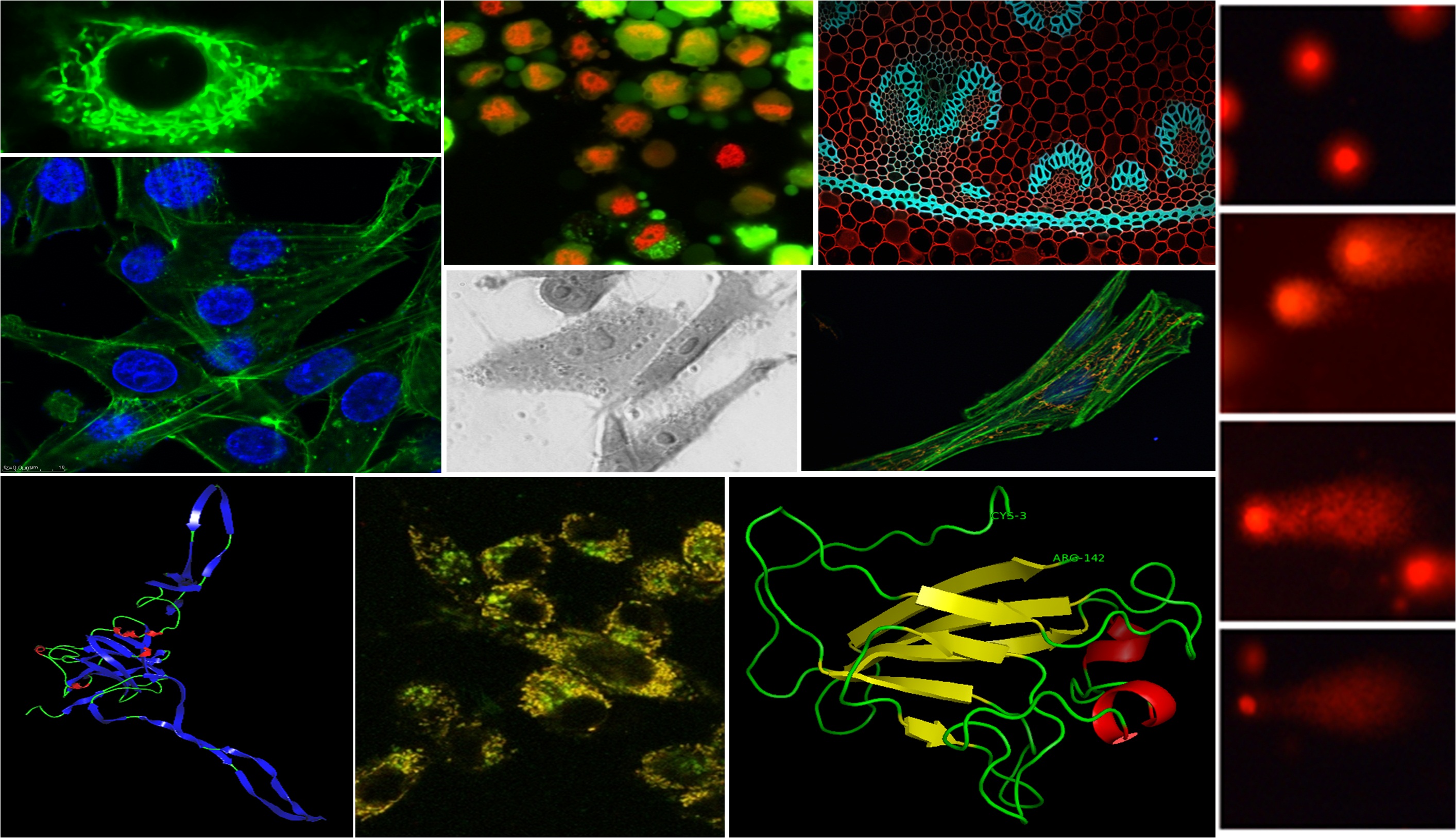|
Natural Radiation Response Mechanisms Group has been recently constituted under the Division of Radiation Biosciences, and is involved in multidisciplinary
cellular and molecular research on important cellular models of radioresistance and radiosensitivity. While the mankind still
struggles to improve the radiomodification/ radioprotection levels beyond the available drugs, these higher eukaryotic cellular
models show excessive resistance (100 times or more) or sensitivity despite being human cells or being structurally and biochemically
very similar to human cells.

Insect cell Radioresistance and
Radioptrotection: The radiation response of eukaryotic cells is characterized by damage to biomolecules leading to
repair and fixation of DNA lesions, cell cycle perturbations, cytogenetic damage, induction of signal transduction pathways,
changes in gene expression patterns as well as cell behaviour. All these responses collectively determine the cellular fate,
i.e., cell death, survival, mutation and transformation/ carcinogenesis.These responses show considerable variation amongst
different species and amongst different cell types, and even amongst different organisms. The most prominent natural examples
with extensive variation in radiation response are the organisms displaying very high variation in cellular radioresistance
as compared to mammalian cells and tissues. One such example is cultured insect cells, which display up to 100 times higher
radioresistance despite carrying high homology with human cells in their morphology, biochemistry and molecular stress responses.
Compared with the other naturally existing radioresistant system including yeast and bacteria, insects are evolutionarily
closer to mammalian system. Therefore, insect cells can serve as useful models for identifying the cellular factors and mechanisms
that could prove potentially useful for enhancing cellular radio-resistance of human cells. During the past few years, we
have considerably added to the scientific understanding of insect cell radioresistance and stress response mechanisms. While
it was known earlier that insect cells (especially the Lepidopteran cells) may be able to repair DNA damage with more efficiency
as compared to human cells, we have further shown that these cells (Sf9 cell line from Spodoptera frugiperda; order Lepidoptera)
suffer significantly lower DNA damage by ionizing radiation, and are also very highly resistant against radiation-induced
apoptosis. We have also shown that these cells carry certain peculiar similarities to (e.g., mitochondrial involvement in
apoptosis) and differences from (e.g., NOS localization and radiation-induced activation; micro-RNA regulation) human cells,
which considerably influence their radiation and stress responses.
Low-Dose Radiation Hypersensitivity
and Potential Applications: The classical mammalian radiation dose response cell survival curve has a shoulder region
followed by exponential reduction in surviving fraction. Survival response below 50cGy in these curves was generally extrapolated
from the data at higher doses. However, during the last one and a half decade, a number of studies have revealed that the
cell survival reduces drastically at doses below 50cGy, and this response was termed ‘low-dose hyper-radiosensitivity’
or HRS. Surviving fraction rises again at the doses immediately higher than HRS doses, which is hypothesized to be a consequence
of sufficient stimulation of cellular repair machinery at cellular damage above a certain threshold, and is commonly termed
‘induced radioresistance’ or IRR . Low-dose radiation hypersensitivity has been observed in various mammalian
and human cell lines using the cell survival macrocolony assay as well as certain sensitive DNA damage assays such as gamma-H2AX
assay. Majority of the cell lines tested for the occurrence of HRS/IRR response are tumour cell lines, and barring very few
exceptions, most of these cell lines have displayed HRS/IRR, thus implying that this might be a common feature of tumour cells.
Although also observed in certain normal tissues to a lesser extent as well as in fibroblast cells, this important phenomenon
has been of major interest for therapy since in vitro studies have shown its potential to enhance the tumour cell lethality
per unit dose by manifold. Therefore, various investigations have been carried out during the recent years in order to understand
the cellular basis and mechanisms underlying this response and to establish/ optimize its use in cancer therapy. While other
laboratories in the world have shown that cellular factors such as DNA repair, cell cycle regulation and apoptotic regulation
are involved in this response, our laboratory has categorically shown that this response is significantly influenced by cell-to-cell
proximity, and may also be influenced by cell-matrix interactions. Since the cell-cell/ cell-matrix interactions also directly
influence other cellular functions including cell cycle regulation and apoptosis, our study aims at modifying the low dose
responses through modulating cell adhesion patterns. The cell adhesion patterns are also very significant in harnessing the
benefits of low dose HRS, since tumour cells may respond differentially to low doses and/or certain cell adhesion targeting
drugs. Our studies are aimed at developing low-dose based therapeutic and preventive treatments for radiation-induced cellular
injuries, genetic damage and carcinogenesis
|




